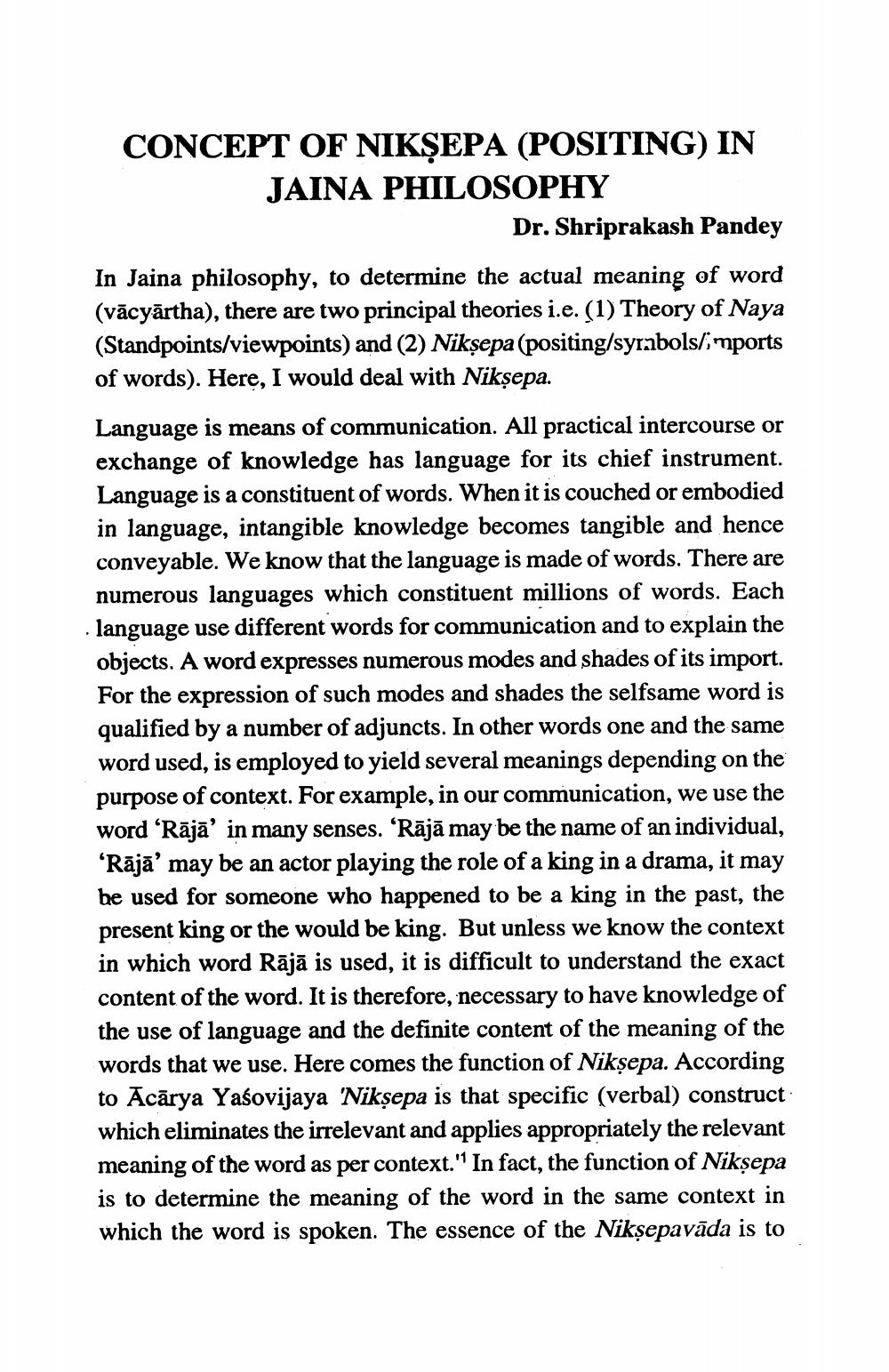________________
CONCEPT OF NIKŞEPA (POSITING) IN JAINA PHILOSOPHY
Dr. Shriprakash Pandey In Jaina philosophy, to determine the actual meaning of word (vācyārtha), there are two principal theories i.e. (1) Theory of Naya (Standpoints/viewpoints) and (2) Nikṣepa (positing/syrabols/imports of words). Here, I would deal with Nikṣepa.
Language is means of communication. All practical intercourse or exchange of knowledge has language for its chief instrument. Language is a constituent of words. When it is couched or embodied in language, intangible knowledge becomes tangible and hence conveyable. We know that the language is made of words. There are numerous languages which constituent millions of words. Each . language use different words for communication and to explain the objects. A word expresses numerous modes and shades of its import. For the expression of such modes and shades the selfsame word is qualified by a number of adjuncts. In other words one and the same word used, is employed to yield several meanings depending on the purpose of context. For example, in our communication, we use the word 'Rājā' in many senses. 'Rājā may be the name of an individual, ‘Rājā' may be an actor playing the role of a king in a drama, it may be used for someone who happened to be a king in the past, the present king or the would be king. But unless we know the context in which word Rājā is used, it is difficult to understand the exact content of the word. It is therefore, necessary to have knowledge of the use of language and the definite content of the meaning of the words that we use. Here comes the function of Nikṣepa. According to Ācārya Yaśovijaya 'Nikṣepa is that specific (verbal) construct which eliminates the irrelevant and applies appropriately the relevant meaning of the word as per context." In fact, the function of Niksepa is to determine the meaning of the word in the same context in which the word is spoken. The essence of the Niksepavāda is to




